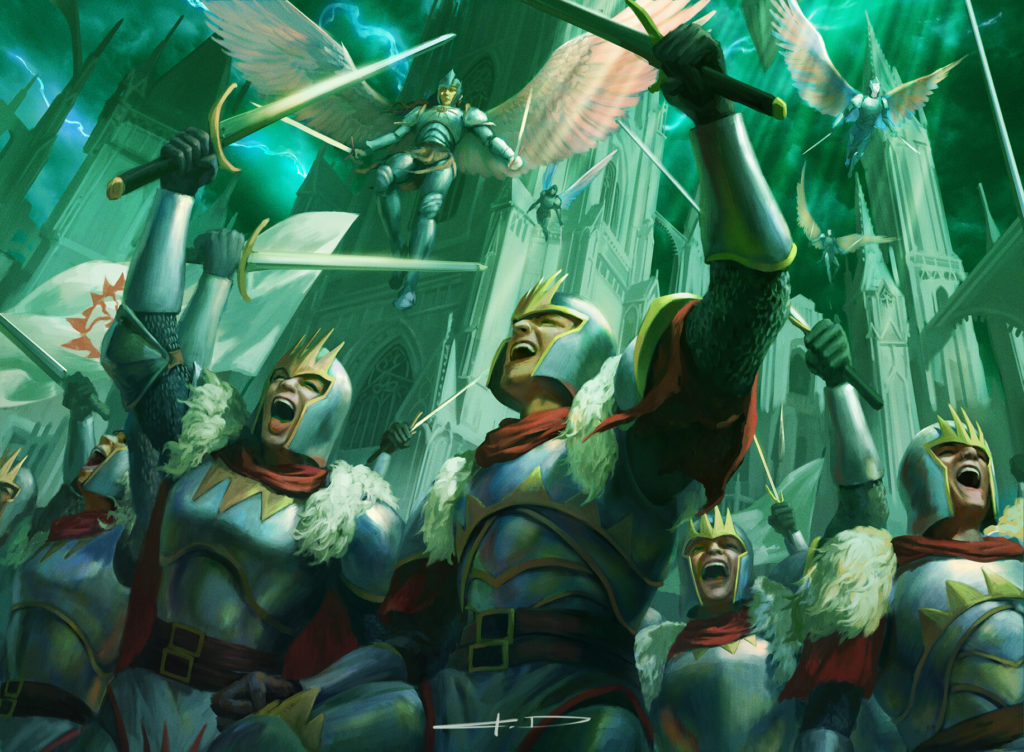With the whole of 2019 ravaging our cubes for the better part of a year, I think it’s time for a collective moment of reflection. I’d like to go back and, beginning with War of the Spark, examine this last year of releases and the monumental impact they’ve had on our cubes. Where did my expectations end up? I’ll go over what I’ve spent my energy testing: what’s been successful, what’s been disappointing, and (most important) what broke our format!
I think it goes without saying that 2019 has, for many of us, sufficiently proven itself to be a golden age for advancement in cube theory and design. In fact, the effect this year has had (and will continue to have) on the relative power level of our environments is so awesome, I expect many of us will look back to this past year as a new reference point. Perhaps equally with disgust as well as joy, but nevertheless.
I’ll be addressing this review chronologically, exploring first the expansion’s holistic impact and then get into the relevant cards tested and the positive or negative result of that process. I won’t review every single card I tested; if I didn’t touch on something you believe warranted discussion, reach out to me on social media. I would love to know what I’ve missed.
Let’s begin with War of the Spark.
War of the Spark is the first set where I whispered, “Holy Crap!” to my computer daily during spoiler season. A sea of planeswalkers, the Finale and God-Eternal cycles, cost-efficient creatures and spells. The sheer number of abstractly “testable” cards was inspiring to see, and it took time to whittle down to what I believed was most vital to my environments.
Much has been written already on the audacity of WAR’s mechanical design, but it’s worth repeating that planeswalker static abilities were a tremendous innovation. Even if some of them ended up being close to miserable to play against, the gameplay complexity brought about by these static abilities is engaging design space.
I understand there are those of us who don’t care much for flooding their cubes with planeswalkers. I went through this myself for years, and seeded them quite scarcely. But I’ve come around on planeswalkers as of late, and support them judiciously now. I accept them as dynamic, board-centric threats that increase decision-making on both sides of the table. And in a fair environment like mine, that’s right where I want to be. They can be tricky to balance around, but it’s only when you allow planeswalkers to dominate will they then be the best thing to be doing. This is, I believe, a symptom of not understanding the speed or levels of interaction in a given environment. In my cube, Jace, the Mind Sculptor is very often nothing more than a four-mana Brainstorm.
So how did the set full of Planeswalkers shake out?
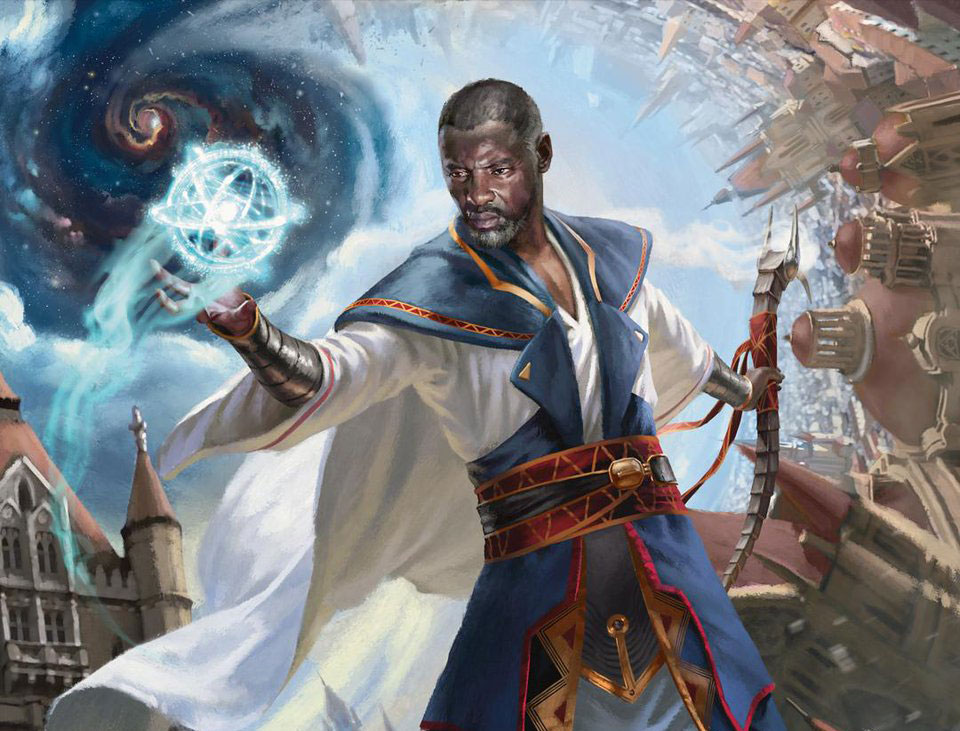
The Busted Walkers
I tested a lot of the thirty-six planeswalkers in War of the Spark at various power levels over the past year. Teferi, Time Raveler and Narset, Parter of Veils have both overperformed beyond my already high expectations of them, thanks largely in part to their constructed performance leading the way. I believe they are objectively the two walkers most deemed “unfun” of the lot, and with good reason. Stopping the opponent from drawing extra cards or forcing them to play Hearthstone can be incredibly punishing, especially as we near Vintage power levels.

Debating which one is ultimately better isn’t all that productive, but if pressed I’d cast my vote for Teferi. He has an impact on nearly any boardstate, and is playable in virtually any Azorius deck. Conversely Narset, who some refer to affectionately as the three mana Dig Through Time, requires at least some considerations in deckbuilding, and you cannot expect Narset to catch you up when behind. I still play her in most of my Blue decks. She isn’t always amazing, but when that static ability is live it can and will swing a game extraordinarily in your favor.
I’d strongly suggest against running either of them unless you’re comfortable increasing the amount of non-games experienced by your drafters. They’re not broken, but can engender miserable experiences. That’s a dealbreaker for me, especially for three mana.
The Good Ones
Jace, Wielder of Mysteries is one of the more interesting WAR planeswalkers. He’s a self-contained win condition that, while not at all capable of protecting you or himself, is easy to exploit in a controlling Blue deck. He’s proven to be a premier threat in control mirrors or against midrange, and is fragile against aggressive decks where he mostly functions as four mana: gain five life and draw a card. However this in no way stops me from running Jace in almost any Blue-based deck with decent enough mana. Alternate win conditions for control decks are awesome as we have the tools for drawing ridiculous amounts of cards. Having the option to pressure an opponents library or accelerate the milling of your own has been excellent and I look forward to keeping Jace around for a while.
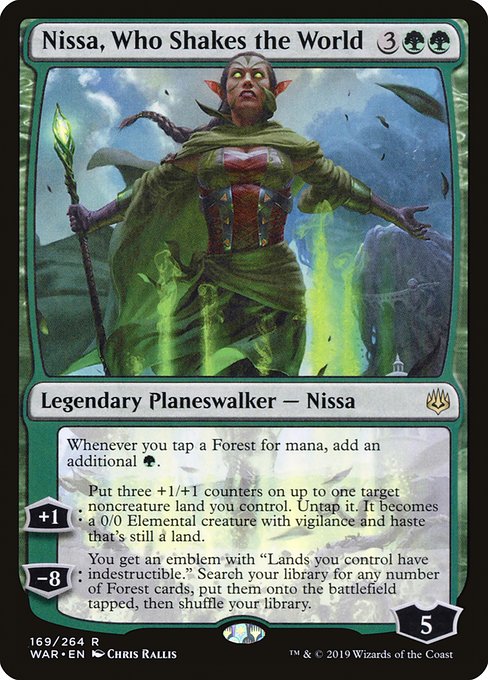
Nissa, Who Shakes the World is, in a word, hilarious. Is she the best Green planeswalker ever, full stop? Certainly she’s the best at five mana. Anyone reading this who has played Standard recently knows what a messed up card Nissa is, and really she’s close to being catagorized alongside the “busted” planeswalkers above. She’s fair, but right on that edge. I assumed she’d be great, but I didn’t expect to keep taking her higher and higher, even in cubes which boast higher power levels. Nissa is servicable in any Green-based midrange strategy. Make a few 3/3’s to beat down with and double spell for a few turns— it’s usually enough to put a game away.
The Fine
Gideon Blackblade tested well as a sticky aggro threat. Three mana walkers often prove themselves worthy cube cards on casting cost alone, and Gideon is no exception. I didn’t expect him to be much more than a beater, and he’s largely been exactly that. A three mana 4/4 troll is a fine bit of stats for any aggressive White deck.
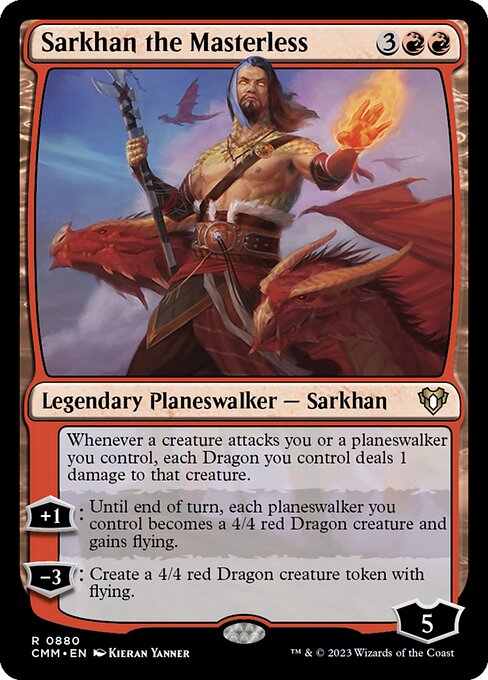
Sarkhan, the Masterless has been a decent midrange threat. I never play him in Mono Red (five mana is too much), but rather in my Green Midrange decks looking for some top end power. Sarhkan will randomly win you the game by coming down and “waking up” a motley crew of planeswalkers, but much of the time he just makes a dragon and soaks up some damage. This gets you your moneys worth, so the rest is just good living.
Liliana, Dreadhorde General and Ugin the Ineffable have been excellent control finishers. They function similarly: both catch you up when behind, protect themselves, and can win the game. Ugin gets the obvious nod for being colorless, but they’re effectively replaceable six mana win conditions. This isn’t to suggest they’re boring cards. On the contrary, they’re excellent. When I say they’re replaceable, I mean they do exactly what you need them to do for the cost, and don’t punish you for your investment. What more do you require?
These cards don’t feel like staples, but solid role players. They’re each better than most creatures at the same cost, or about equal with some of the more high impact threats we can run—Glorybringer, Wurmcoil Engine, etc. I’m happy to have access to each of them, but not married to any.
The Disappointing
Saheeli, Sublime Artificer was one of my bigger disappointments. I see her performing well in rarity-restricted cubes where spending three mana on—let’s be honest, nothing more than an attackable enchantment—has an abysmal floor. I’m not ready to cut her, but I think she needs high synergy environment with Artifacts, or a slower environment than mine where one has time to set up.
Nicol Bolas, Dragon-God is a fine card, but prohibitively awkward to cast even for dedicated Grixis mana bases. Cards like this tend not to pull someone into Grixis, but reward the greed pile drafter for playing with 16 nonbasic lands. I don’t actively support such nonsense, and I don’t recommend it.
Finales and Gods-Eternal
Finale of Glory might not look like much, and I’ll admit I wasn’t initially on this one at release. Indeed, this was before I understood the value of threats that scale with the game like Wolfbriar Elemental or Stonecoil Serpent. It didn’t take much convincing to realize this card plays in basically any White deck.
Its tolerable floor is Call the Cavalry, which isn’t that far off from cube-playable already. Play an aggro deck and this trades for a sweeper all by itself. Play a control deck and you can flood the board with blockers to buy yourself some time. It’s great at any point on the curve (except at X=1 where it’s just Grey Ogre) and as such I have been consistently surprised by its performance.
The kicker on this card is unnecessarily distracting as it’s almost never cast for X=10, and it doesn’t require anywhere close to that amount of mana to win the game. It’s cute when it happens—I’ve seen it once.
Finale of Devastation has seen play in cubes looking for places to sink an arbitrarily large amount of mana. Tutoring up a ramp payoff or toolbox value creature has its value, especially when you have the graveyard too. But unless you run it alongside Channel or Heartbeat of Spring, you don’t need to bother paying the full X=10. The card is fine, mostly because tutors are so powerful, but I’ve found it a touch expensive overall.

I haven’t tested God-Eternal Bontu at all, but I’ve received a lot of feedback that this was, in fact, The One God That was Good Enough. I really don’t see it, though. Slow and expensive for essentially Baneslayer Angel that can return to play every few turns. I know we’re all hungry for something besides Shriekmaw to impress us at five mana in Black, but come on.
The rest of the Gods are fine rates for Limited, but don’t do enough to earn a slot in my estimation. Resiliency to removal isn’t enough, especially with these gods returning on such an awkward delay.
The Rest of the Set
Prison Realm is a redundant copy of Oblivion Ring, even a narrow one, that i’m happy enough to include. White removal, even when slightly conditional, still does the job.
I heralded Dreadhorde Invasion as the next Bitterblossom, and hoooooo boy was I wrong. It’s terminally slow, non-evasive, and cannot go wide. They balanced the shit out of this card in design, and it shows.
Six mana might seem like a lot, but think of Commence the Endgame as an uncounterable, instant speed Mulldrifter that’ll ambush opposing attackers or an unprotected planeswalker. I don’t know if I need to sell it beyond that.
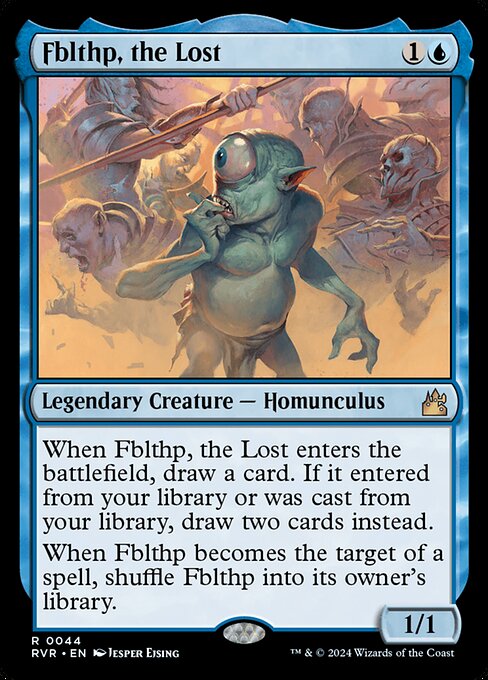
Fblthp, the Lost was a slam dunk pick early on for me and has since performed well. I’m always happy to have Fblthp in my Blue decks. A cantripping piece of cheap interaction that bridges you to a sweeper or protects a Planeswalker is well worth the two mana. The targeting clause is mostly flavor text.
Without the deckbuilding consistency of constructed Legacy or Vintage, making Dreadhorde Arcanist functional is more trouble than it’s worth for a Singelton format. It’s one of those cards that’s “cool to go off with” but has very little value otherwise, and cannot be supported enough in my cube to reasonably function as anything but a 1/3 most games.
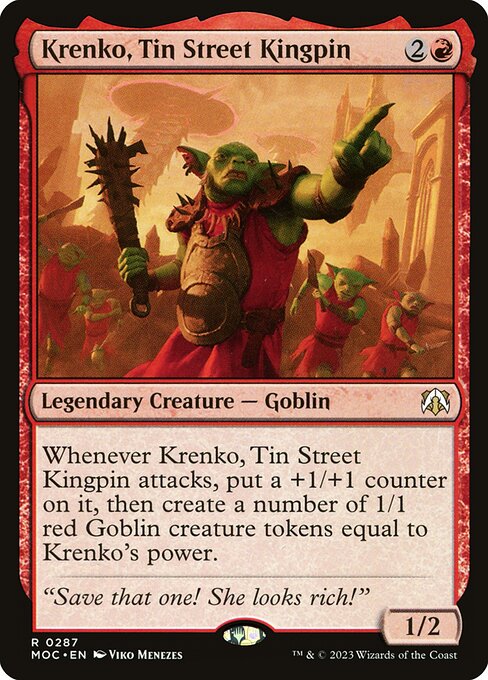
We now have a threat category for Red affectionately titled “Rablemasters” when referring to Goblin Rabblemaster and his contemporaries. Krenko, Tin Street Kingpin is one of them, so I was excited to add him to my roster. However, much of the time he was little more than a three mana Baneslayer I couldn’t reliably untap with. Most of the Rabblemasters function similarly, apart from those who get value almost immediately—Legion Warboss and Goblin Rabblemaster himself. While these threats provide a power spike against control decks, any reasonable creature deck can interact with (read: block) and overpower the army-in-a-can strategy.
That about does it for War of the Spark. The big impact on cube, again, was Planeswalkers and the introduction of Planeswalker statics. If nothing else sticks, we should remember that this was the beginning of a new paradigm for everyone’s favorite permanent type.


